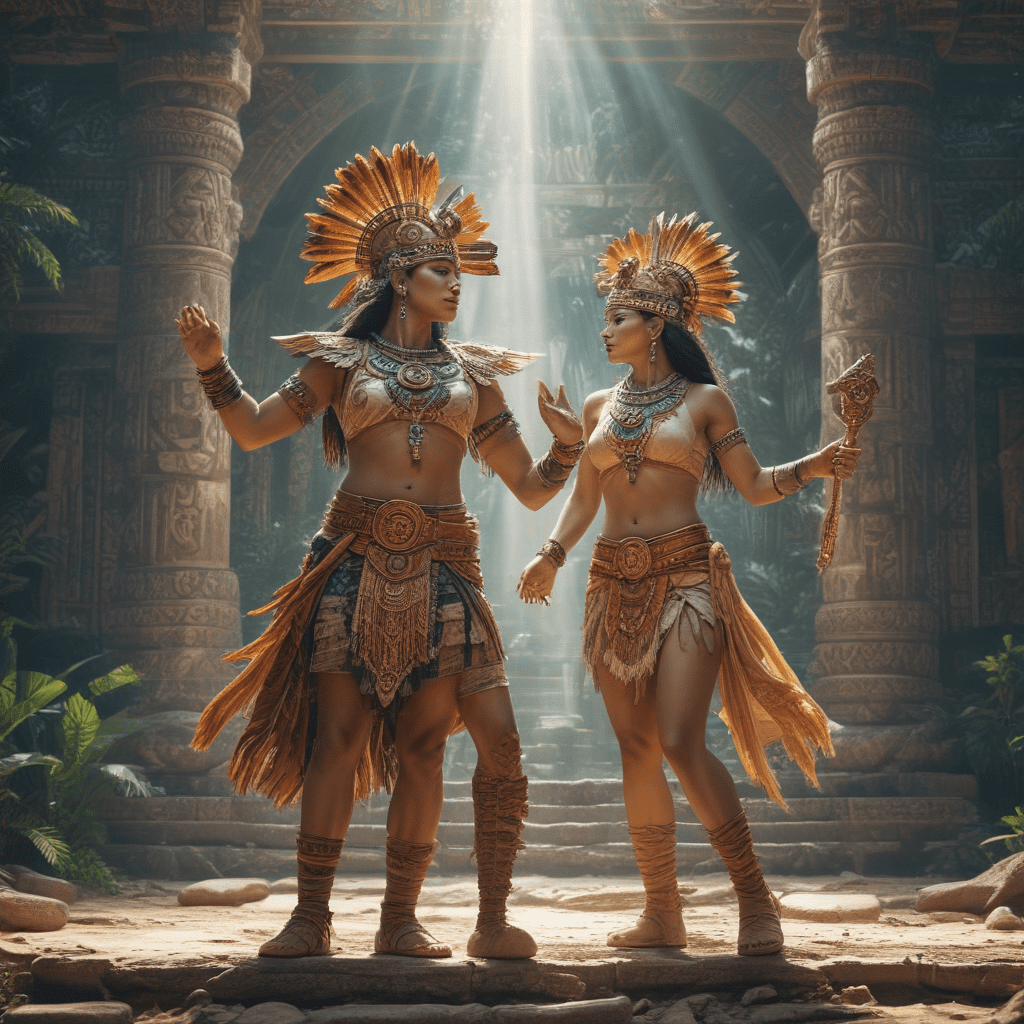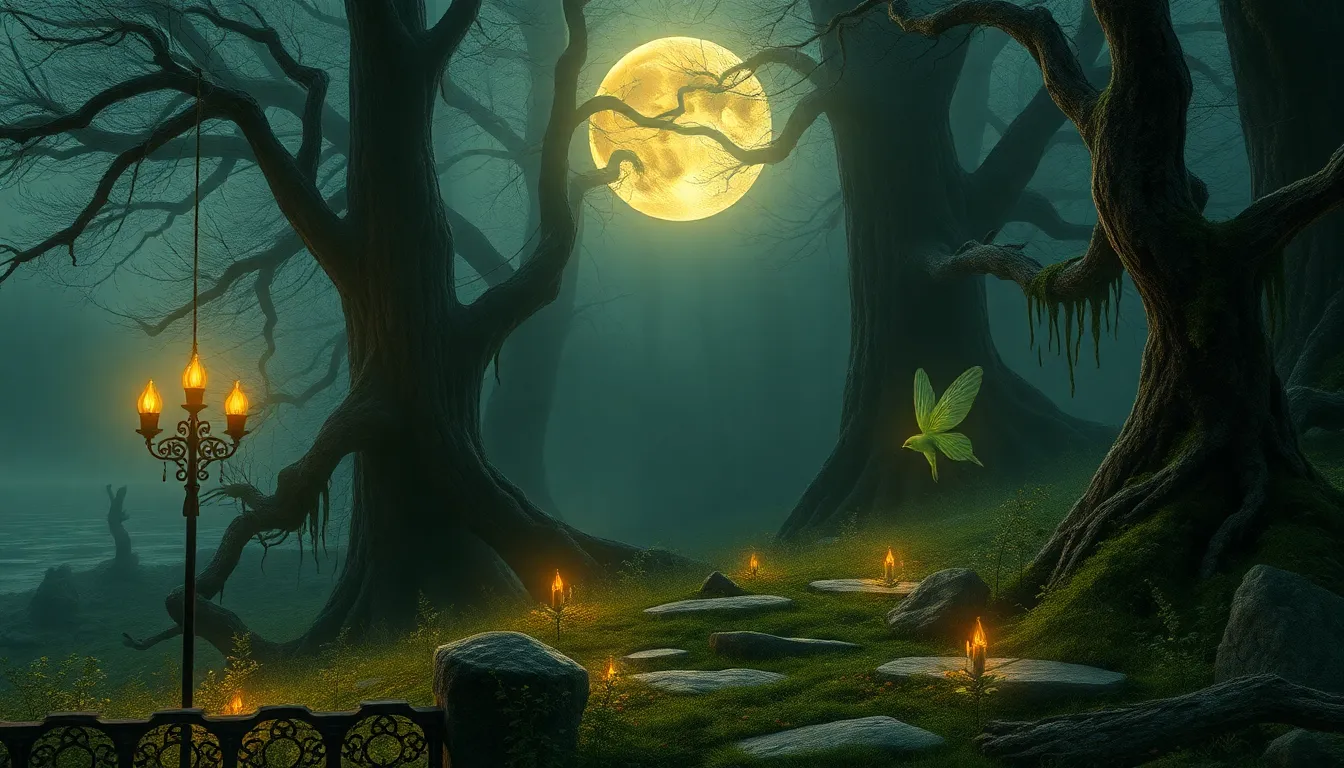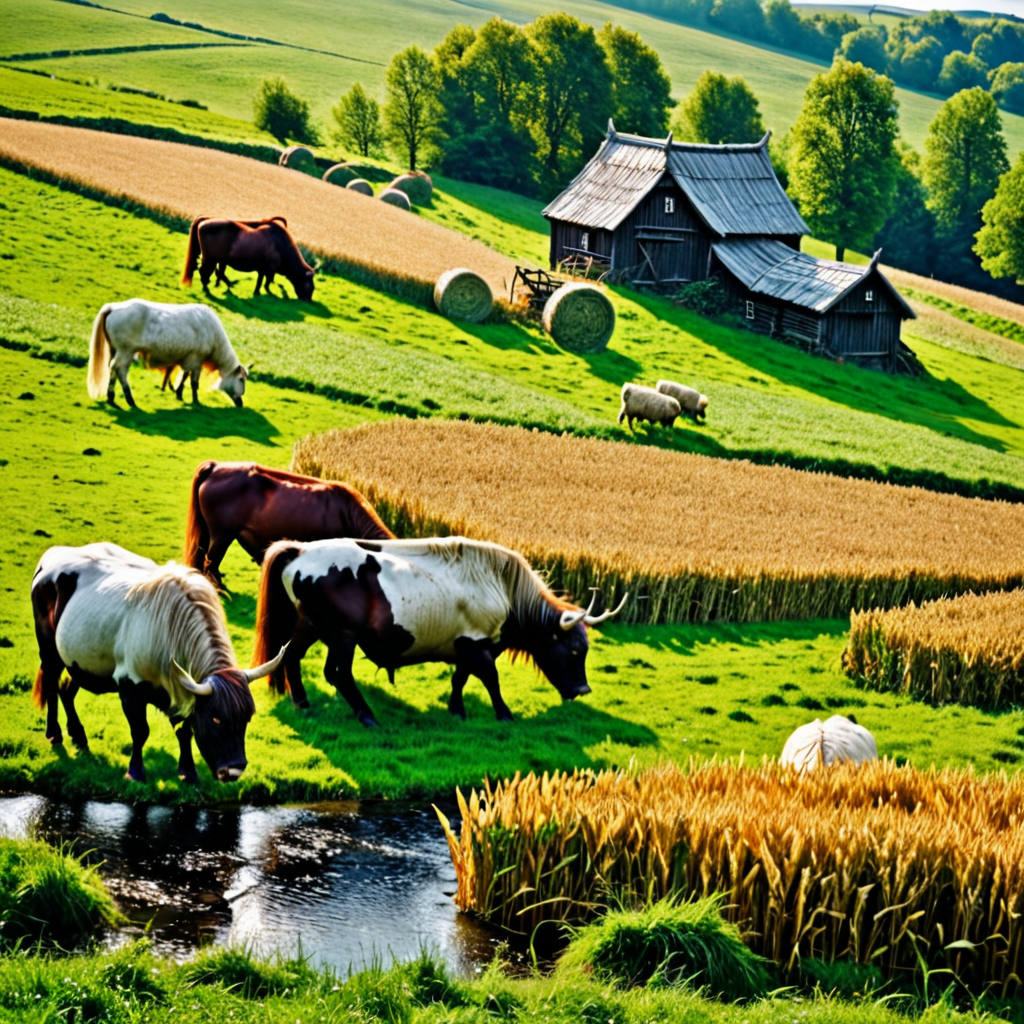Mayan Mythology and the Concept of Dualism
Introduction
Nestled within the lush rainforests and towering pyramids of Central America, the ancient Mayan civilization flourished for centuries, leaving behind a legacy of rich mythology and profound philosophical insights. Central to their understanding of the universe was the concept of dualism, a belief that the world is governed by opposing yet complementary forces. This article delves into the fascinating interplay of duality in Mayan mythology, exploring its manifestations in creation myths, rituals, art, and architecture.
The Dualistic Nature of the Mayan Worldview
For the ancient Maya, the world was not merely a static entity but a dynamic tapestry woven from contrasting threads. They perceived a fundamental duality in all aspects of existence, from the celestial heavens to the subterranean underworld. The celestial realm, bathed in sunlight and ruled by benevolent deities, represented the realm of life, growth, and creation. Conversely, the underworld, shrouded in darkness and inhabited by chthonic deities, symbolized death, decay, and the unknown. This interplay of light and darkness, life and death, formed the bedrock of Mayan cosmology.
The Role of Duality in Mayan Creation Myths
The creation myth of the Maya eloquently illustrates the concept of dualism. According to this myth, the maize god, a symbol of life and sustenance, emerged from the underworld with the assistance of a deity from the celestial realm. This act of collaboration between the two realms underscores the belief that creation arises from the harmonious interplay of opposing forces. The myth further emphasizes the cyclical nature of life and death, with the maize god's descent into the underworld representing the necessary sacrifice for ensuring future growth and renewal.
Dualism in Mayan Rituals and Beliefs
Duality permeated every aspect of Mayan life, including their rituals and beliefs. The ball game, a ritualistic sport deeply embedded in Mayan culture, embodied the struggle between opposing teams, representing the forces of light and darkness. Bloodletting, a practice involving the offering of one's own blood, served as a symbolic act of sacrifice, reaffirming the interdependence of life and death. The Maya believed that the sacrifice of blood appeased the deities and maintained balance between the celestial and underworld realms.
Mayan Calendar and the Cycles of Time
The intricate Mayan calendar system, far beyond merely tracking time, profoundly reflected their concept of dualism. Built upon a cyclical structure, the calendar comprised various periods known as "katuns" and "baktuns," representing distinct phases of creation and destruction. Each katun spanned 20 years, symbolizing a period of growth and flourishing, while a baktun encompassed 144,000 days, marking an epoch of cataclysmic change and renewal. The cyclical nature of the calendar mirrored the Mayan belief in the eternal dance between creation and destruction, a fundamental principle of dualism.
The solstices and equinoxes held immense significance within the Mayan calendar and rituals. These celestial events, marking the transitions between light and darkness, seasons, and life stages, were seen as pivotal moments for maintaining cosmic balance. Specific rituals and offerings were performed during these times to appease the deities and ensure the continuation of the cosmic cycles.
The Symbolism of Duality in Mayan Art and Architecture
The ubiquitous presence of dualistic symbolism in Mayan art and architecture offers profound insights into their worldview. Serpents and jaguars, recurring motifs in Mayan art, embodied the contrasting forces of life and death, respectively. The serpent, with its shedding of skin, symbolized regeneration and the cyclical nature of time, while the jaguar, a powerful predator, represented the underworld and its chthonic forces.
Mayan pyramids and temples, monumental structures aligned with celestial bodies, served as physical manifestations of dualism. The stepped pyramids, rising towards the heavens, symbolized the ascent to the celestial realm, while the subterranean chambers within them represented the descent into the underworld. The intricate cosmological diagrams and depictions of deities adorned on these structures further emphasized the interplay of opposing forces in the Mayan worldview.
Theories on the Origins and Meaning of Mayan Dualism
The origins and profound significance of Mayan dualism have captivated scholars and researchers for centuries. Various theories attempt to explain its roots, ranging from influences from other Mesoamerican cultures to the inherent human tendency to perceive the world in terms of dualities. Some scholars suggest that the cyclical nature of the environment, with alternating wet and dry seasons, may have influenced the development of dualistic beliefs. Others posit that the concept of dualism arose from the observation of natural phenomena like day and night, light and darkness, and life and death.
Frequently Asked Questions (FAQs)
What is the significance of the Hero Twins in Mayan mythology?
The Hero Twins, prominent figures in Mayan mythology, embody the concept of duality through their contrasting personalities and roles. One twin, representing the sun, possesses light and creative powers, while the other, associated with the moon, wields darkness and transformative abilities. Their journey through the underworld signifies the cyclical nature of life, death, and rebirth, central to Mayan beliefs.
How did the Maya perceive the relationship between the celestial and underworld realms?
The Maya viewed the celestial and underworld realms as interconnected and interdependent. The celestial realm, associated with life and creation, was believed to be sustained by offerings and sacrifices made to the underworld deities. Conversely, the underworld, representing death and decay, was seen as a necessary stage in the cycle of life and rebirth.
What is the significance of bloodletting in Mayan rituals?
Bloodletting, a ritualistic practice involving the offering of one's own blood, held deep symbolic meaning for the Maya. It served as a form of sacrifice to appease the deities and maintain balance between the celestial and underworld realms. The act of offering blood was believed to revitalize the gods and ensure the continuation of life and prosperity.


